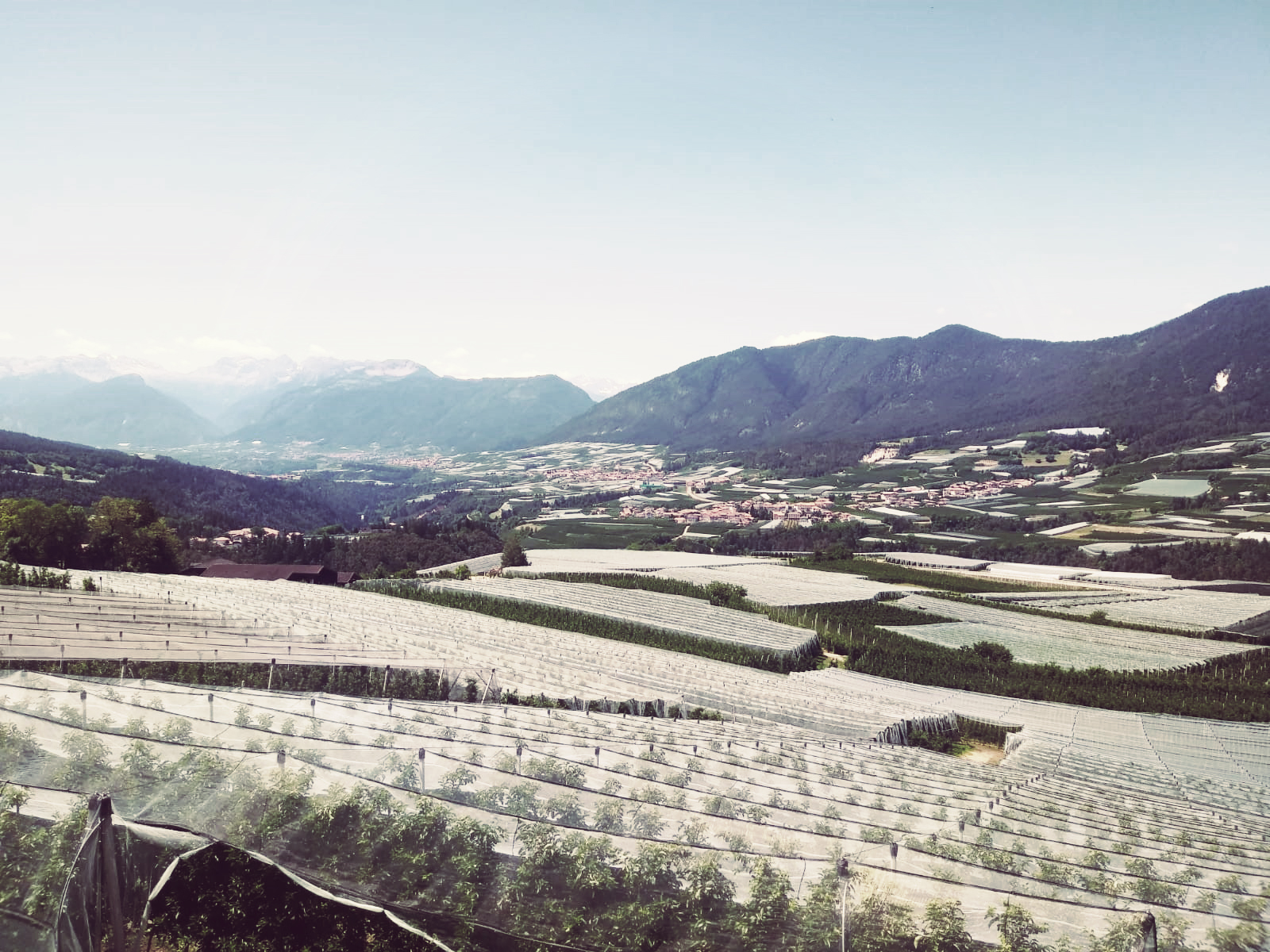The supply chain among machinery, technologies and apple producers.
The case of Val di Non in Italy and the apple assemblages
DOI:
https://doi.org/10.13133/2532-6562/18492Keywords:
Territories of monocultures, Actor-Network Theory, AssemblageAbstract
Within the framework of the European ecological transition, the paper stands as a research agenda to interpret the supply chain of the case study of Val di Non (TN). Exploring in depth these mechanisms, the operation suggested turning to the Actor-Network Theory’s framework. From the new analytical position, the focus is to understand what research avenues may emerge.
Through the supply chain deconstruction, three main elements come to light: the network metaphor, the radical symmetry, and the material turn. The three elements will guide the narrative of the Trentino case. Finally, the manuscript concludes with three main issues that would prompt planning to assume an active mediating and not neutral role, to interpret the assemblage as infrastructure, and to re-engage the environmental dimension from a socio-material perspective.
References
Basso M. (2018). «From daily land-use practice to global phenomenon. On the origin and recent evolution of prosecco’s wine landscape (Italy)». Miscellanea Geographica Regional Studies on Development, 22: 109-115. DOI: 10.2478/mgrsd-2018-0013.
Basso M. (2019). «Land-use changes triggered by the expansion of wine-growing areas: A study on the Municipalities in the Prosecco’s production zone (Italy)». Land Use Policy, 83: 390-402. DOI: 10.1016/j.landusepol.2019.02.004.
Basso M., Vettoretto L. (2020). «Reversal sprawl. Land-use regulation, society and institutions in Proseccotown». Land Use Policy, 99: 1-16. DOI: 10.1016/j.landusepol.2020.105016
Beauregard R. A. (2013). «The neglected places of practice». Planning Theory & Practice, 14: 8-19. DOI:10.1080/14649357.2012.744460.
Brenner N., Katsikis, N. (2020). «Operational Landscapes: Hinterlands of the Capitalocene». Architectural Design, 90: 22-31. DOI: 10.1002/ad.2521.
Brenner N., Katsikis N. (2023). «Hinterlands of the Capitalocene». In: Kaika M., Keil R., Mandler T., Tzaninis Y., eds., Turning up the heat. Urban political ecology for a climate emergency. Manchester: Manchester University Press.
Callon M. (1984). «Some elements of a sociology of translation: Domestication of the scallops and the fishermen of St Brieuc Bay». The Sociological Review, 32: 196-233. DOI: 10.1111/j.1467-954x.1984.tb00113.x.
Callon M. (1986). «The Sociology of an ActorNetwork: The Case of the Electric Vehicle». In: Callon M., Law J., Rip A. (eds.), Mapping the Dynamics of Science and Technology. Sociology of Science in the Real World. London: Palgrave Macmillan.
COM (2022). Proposal for a REGULATION OF THE EUROPEAN PARLIAMENT AND OF THE COUNCIL on the sustainable use of plant protection products and amending Regulation (EU) 2021/2115.
Coppola A., Lanzani A., Zanfi F. (2021). «Tra eredità, riscoperte e un futuro diverso: Ripensare le politiche urbanistiche e territoriali. In: Coppola A., Del Fabbro M., Lanzani A., Pessina G., Zanfi F., a cura di, Ricomporre i divari. Politiche e progetti territoriali contro le disuguaglianze e per la transizione ecologica, Bologna: Il Mulino.
Gadone D., Garbarino M., Sibona E., Garnero G., Godone F. (2014). «Progressive fragmentation of a traditional Mediterranean landscape by hazelnut plantations: The impact of CAP over time in the Langhe region (NW Italy)». Land Use Policy, 36: 259-266. DOI: 10.1016/j.landusepol.2013.08.018.
Lieto L., Beauregard R. A. (2013). «Planning for a material world». CRIOS, 2: 11-20. DOI: 10.7373/75519.
Paba G. (2011). «Le cose (che) contano: Nuovi orizzonti di agency nella pianificazione del territorio». CRIOS, 1: 67-80. DOI: 10.7373/70209.
Pellizzoni L. (2023). Cavalcare l’ingovernabile. Natura, neoliberalismo e nuovi materialismi. Napoli-Salerno: Orthotes Editrice.
Rydin Y. (2014). «The challenges of the “material turn” for planning studies». Planning Theory & Practice, 15: 590-595. DOI: 10.1080/14649357.2014.968007.
Rydin Y., Tate L. (2016). «Exploring the influnce of ANT». In: Rydin Y., Tate L., ed., Actor Networks of Planning. Exploring the influence of Actor Network Theory. New York-London: Routledge.
Tizzoni E. (2013). «Agricoltura multifunzionale e paesaggio del melo in Val di Non». Territorio, 66: 100-108. DOI: 10.3280/tr2013-066019.
Vallerani F. (2021). I piaceri della villa. Vivere e raccontare la campagna tra abbandoni e ritorni. Firenze: Le Monnier Università.
Yin R. K. (2014). Case Study Research. Design and Methods (5th edition). Thousand Oaks (CA): Sage Publication.

Downloads
Published
How to Cite
License
Copyright (c) 2024 Francesco Galli

This work is licensed under a Creative Commons Attribution 4.0 International License.
NOTA DI COPYRIGHT
Proposta di licenza Creative Commons
1. Proposta per riviste Open Access
Gli autori che pubblicano su questa rivista accettano le seguenti condizioni:
Gli autori mantengono i diritti sulla loro opera e cedono alla rivista il diritto di prima pubblicazione dell'opera, contemporaneamente licenziata sotto una Licenza Creative Commons - Attribuzione che permette ad altri di condividere l'opera indicando la paternità intellettuale e la prima pubblicazione su questa rivista.
Gli autori possono aderire ad altri accordi di licenza non esclusiva per la distribuzione della versione dell'opera pubblicata (es. depositarla in un archivio istituzionale o pubblicarla in una monografia), a patto di indicare che la prima pubblicazione è avvenuta su questa rivista.
Gli autori possono diffondere la loro opera online (es. in repository istituzionali o nel loro sito web) prima e durante il processo di submission, poiché può portare a scambi produttivi e aumentare le citazioni dell'opera pubblicata (Vedi The Effect of Open Access).

